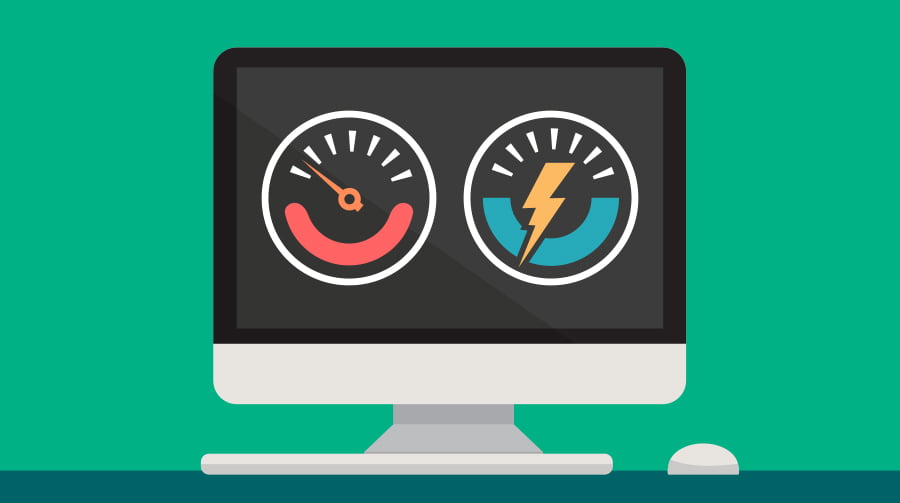Computers have become an essential part of the education process, now arguably as important to a student’s career prospects as being able to calculate equations or construct grammatically correct sentences. But computers are also power hungry and energy costs for educational institutes are rising because of it. That’s why understanding how to maximise energy efficiency for computer rooms is a must. During the 2014-2015 school year, the University of Cambridge spent over £16 million on energy – that’s £31 every minute. To help reduce bills and carbon footprint, allow us to give you our top five ways to reduce energy consumption in computer rooms.
Put to sleep
A common misconception in schools is that a screensaver saves on energy (admittedly, the name implies as much), but it doesn’t. Screensavers were originally created to protect computer monitors from phosphor burn-in. This is when early CRT monitors used phosphors to make the pixels on display, and the glow they produced could discolour the actual glass on the screen if left on for too long. This is all but non-existent in modern computers, so they don’t even do that anymore. But they definitely don’t save energy.
What does save energy is putting a computer to sleep. Sleep stops all actions on a computer and any open documents and applications are put in the RAM so they can be reopened as soon as the computer ‘wakes up’. Sleep still uses some energy, however, so if you are expecting the computers to be out of use for a while – say, overnight when students won’t be using them – then setting the workstation to hibernation mode is an even more efficient power-saving option. This is when the computer stores your documents and running applications to the hard disk, rather than the RAM, meaning it can essentially turn off completely, saving on energy. Many modern Windows computers will automatically be set to hibernation when you put them to sleep.
It’s also worth considering reducing the idle time before a computer puts itself to sleep automatically. If Cambridge had set their PC monitors to sleep after 10 minutes instead of 30, they would save more C02 than what is produced by a plane flying from London to Paris.
Shut Down when not in use
Sleep and hibernation modes are there to save energy while also allowing users to skip the booting-up process. They are not there to replace turning the computers on and off. In the early days of computers, turning your computer off and on regularly could damage its internal components, but this is based on dated technology that’s now obsolete. There’s no longer any danger in turning off your computer regularly. In fact, keeping computers on for too long can cause more damage, as the fan the computer uses has to compensate for the increased heat, and its bearings wear down quicker.
Shutting down a computer and turning it on again every time a new user wants to log on isn’t particularly convenient, however, so it’s understandable that, for example, between classes, you would want to leave computers on sleep. Just keep in mind that while computers set to sleep don’t use much energy, switched off computers use none. So if they are going to be unused for an extended period of time, then it’s a good idea to switch them off.
Check your equipment
Is it time your institute invested in new machinery? If you’re still using those bulking CRT monitors then it might just be! One CRT monitor uses as much energy as three LCD ones. If you are planning to invest in new computer equipment, look for the Energy Star options that could help you save as much as 50% on your energy bill. Keep an eye out for the Energy Star logo on products! LCD monitors might cost a little extra, but the savings on energy bills and the environment will pay that back in no time.
Control the environment
Computers emit a lot of heat, which means heating the room won’t usually be much of a problem during colder months. Keep an eye on the heating and make sure it isn’t on unnecessarily – if you can afford to turn it down just 1°C, then you can shave 8% off of your energy bill. But keeping the room cool is another thing entirely. Hopefully, you keep your database in a different room to your workstations, otherwise you will need to air condition the room to maintain a safe temperature while competing with the heat of many, many machines.
The computers themselves still need to be prevented from overheating, but managing their power usage (as above) can make sure they don’t build up too much heat over time. Of course, you also need to make sure you don’t leave any windows open at night. Aside from the obvious security hazard, a typical window left open overnight in winter will waste enough energy to drive a small car over 35 miles.
Configure
You can also adjust the settings of the workstations themselves to make them more energy efficient. If you adjust the brightness down from 100% down to 70%, you can save up to 20% of the energy usage.
Some computers even let users configure the power management settings, allowing them to define how much power is consumed while the workstation is asleep. Windows 10 lets you choose from default power-saving presets or even a custom power plan. However, you would need to check with an IT professional that this would be suitable for your setup – some LANs run into trouble when trying to operate with power-saving setups.
Those are our top ways to save energy in educational computer rooms. Did we miss any? Let us know on Twitter or get in touch via our contact us page! We look forward to hearing from you!








